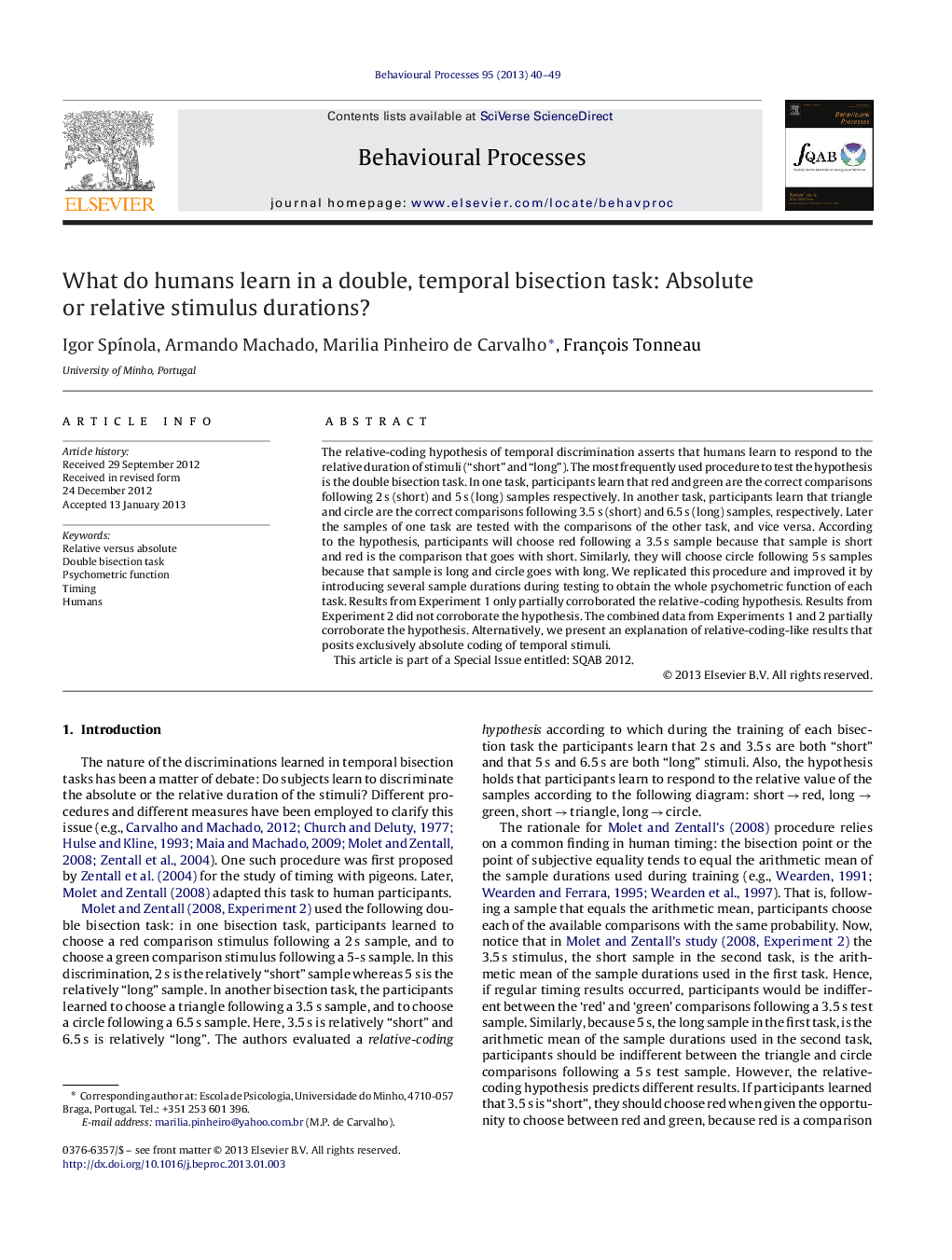| کد مقاله | کد نشریه | سال انتشار | مقاله انگلیسی | نسخه تمام متن |
|---|---|---|---|---|
| 2426851 | 1553184 | 2013 | 10 صفحه PDF | دانلود رایگان |

The relative-coding hypothesis of temporal discrimination asserts that humans learn to respond to the relative duration of stimuli (“short” and “long”). The most frequently used procedure to test the hypothesis is the double bisection task. In one task, participants learn that red and green are the correct comparisons following 2 s (short) and 5 s (long) samples respectively. In another task, participants learn that triangle and circle are the correct comparisons following 3.5 s (short) and 6.5 s (long) samples, respectively. Later the samples of one task are tested with the comparisons of the other task, and vice versa. According to the hypothesis, participants will choose red following a 3.5 s sample because that sample is short and red is the comparison that goes with short. Similarly, they will choose circle following 5 s samples because that sample is long and circle goes with long. We replicated this procedure and improved it by introducing several sample durations during testing to obtain the whole psychometric function of each task. Results from Experiment 1 only partially corroborated the relative-coding hypothesis. Results from Experiment 2 did not corroborate the hypothesis. The combined data from Experiments 1 and 2 partially corroborate the hypothesis. Alternatively, we present an explanation of relative-coding-like results that posits exclusively absolute coding of temporal stimuli.This article is part of a Special Issue entitled: SQAB 2012.
► Humans performed a temporal, double bisection task with the arithmetic mean of one task being a sample stimuli in the other task, and vice versa.
► We tested the relative-coding hypothesis of time perception.
► Would the participants choose a comparison previously associated with a “short” sample when presented to a “short” arithmetic mean?
► Would the participants choose a comparison previously associated with a “long” sample when presented to a “long” arithmetic mean?
► The results did not corroborate the relative-coding hypothesis.
Journal: Behavioural Processes - Volume 95, May 2013, Pages 40–49